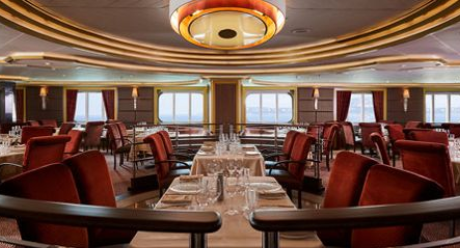Please complete the form below



Monumental scenery surrounds you in this remote corner of the world, where glaciers calve and whales cruise through inky waters, before an immense mountain backdrop. Almost totally submerged by the colossal landscapes around it, Seward – and the wonders of Kenai Fjords National Park – offer some of astonishing Alaska’s most thrilling scenery. Located in a deep gash in the Kenai Peninsula, Seward is a place to immerse yourself in nature’s majesty. View less
Fjords carve into the landscape, while the Harding Icefield – which caps Kenai Fjords National Park – reaches out its icy fingers, with glaciers spilling down between mountain peaks. Head to Holgate Glacier, to come face to face with a breathtaking stack of intense blue and white ice. Get up close in a kayak or boat ride, to slalom through the discarded confetti of ice chunks, and perhaps even witness the powerful spectacle of an ice ledge creaking and groaning, before plunging to the waters below. The city of Anchorage is easily within reach from here, offering an incongruous contrast to the wild wonders of Alaska. A place where deep-sea fishermen bump shoulders with businesspeople on the 9-5, it’s a fascinating, remote city. Home to almost half of the Alaskan population, Anchorage and its humble skyline is dwarfed by the snowy peaks of the wilderness beyond. Don’t miss the opportunity to immerse yourself in the unique culture, traditions and heritage of the First Nation people of these lands too.
Nestled among rolling hills and overlooking Kachemak Bay and the Kenai Mountains is the seaside community of Homer, Alaska. People have inhabited Kachemak Bay for thousands of years, drawn to its abundant, diverse land and marine animals and relatively mild climate. In the 1800’s, homesteaders and coal miners made up the area’s population and Homer became a booming town until the demand for coal diminished in the early 1900’s. Some years later, the commercial harvest and processing of fish became the mainstay of the local economy. Today, Homer’s economy relies on commercial fishing and the growing tourism industry. It is a gateway to outdoor Alaska adventures.
The domain of grizzlies, brown and black bears, Kodiak Island is a raw, wild, and utterly authentic Alaskan wilderness. The Emerald Isle is the USA’s second-largest island, and with a wilderness stretching out over 3,670 square miles, it’s a thrilling voyage into the Alaskan unknown. The weather may get a little cloudy at times, but the locals actively welcome a covering of cloud – perhaps partly because the clouds and fog are said to have deterred Japanese attacks during World War II’s hostilities. View less
Be sure to bring your camera with you; it’s nigh on impossible to take a bad photo of these irresistible vistas – and you’ll quickly see why Kodiak Island is the destination of choice for wildlife documentary producers. Cinematic setpieces regularly play out, as eagles soar over expansive sweeps of fir-tree forested mountains and still lakes, releasing occasional piercing calls. Some of the animal kingdom’s most feared and revered creatures call Kodiak Island home, and your first sight of a bear reaching a massive paw into the water, or treading through a gently burbling stream, will live with you forever. Soar in a seaplane to track the bears with an expert guide. Masters of disguise, it often takes a trained eye to spot the bears in their natural habitats. Brush up on the skills you’ll need in advance, with a read of our bear watching blog. [Insert blog: 7 tips for bear watching in Alaska]. The waters of Kodiak Island are also home to some of the world’s most productive fishing. Try out your own skills, or accompany a seafaring fishing vessel, to witness life on the waves first-hand, as they plunder the depths of the ocean.
Gaze down over Hakodate, from the heights of its namesake peak – Mount Hakodate – to see the city stretching out spectacularly, with back-to-back twin bays splitting the ocean. Hakodate port was one of the first to open Japan up to the world, and to international trade in 1859 – a fact reflected in the architecture, with its influences from the West and beyond. The port area is a redbrick wash of warehouses turned shopping malls, all observed by the onion domes of the city’s Russian Orthodox church.
Located in southwestern Hokkaido, about 130km south of Sapporo, Muroran runs along the coast and takes up most of the peninsula area. The southwest coast of the peninsula is formed of huge 100 m cliffs and faces Uchiura Bay, while southeastern coast of the peninsula meets the Pacific Ocean. The large, deep, water port dates from 1872 made the city an industrial hub and the town’s nickname “the city of steel”, gives you more or less a feel for what one can expect.
Miyako is a city located in Iwate Prefecture, Japan. As of 1 April 2020, the city had an estimated population of 51,150, and a population density of 41 persons per km². The total area of the city is 1,259.15 square kilometers.
Situated in the centre of the Miyagi Prefecture, Sendai City is the largest city in the Tohoku region, and the political and economic centre of the Northwest region. In spite of its large size, Sendai is renowned throughout Japan as a modern city in harmony with nature. The city possesses beautiful scenery, including the Hirose-gawa River running through Central Sendai and the lush zelkova trees lining its streets. Greenery is especially abundant in the centre of the city, which has tree-lined streets and parks. As a result, Sendai is called the ‘City of Trees’.
Dense and delightful, there’s nowhere else like Japan’s kinetic capital – a city where ancient traditions blend seamlessly with a relentless pursuit for the future’s sharpest edge. See the city from above, as elevators rocket you up to towering viewing platforms, from which you can survey a vast urban ocean, interspersed with sky-scraping needles. Look out as far as the distant loom of Mount Fuji’s cone on clear days. View less
Futuristic – second-accurate – transport seamlessly links Tokyo’s 14 districts, while the glow of flashing advertisement boards, clanks of arcade machines, and waves of humanity flowing along its streets, adds to the sense of mesmerising, dizzying and glorious sensory overload. One of Tokyo’s most iconic sights, don’t miss the flood of people scrambling to cross Shibuya’s famous intersection. Join the choreographed dance, as crowds of briefcase-carrying commuters are given the green light to cross at the same time – bathed in the light of massive neon advertisements. The culture is immensely rich and deep, with 7th-century, lantern-decorated temples, stunning palaces and tranquil scarlet shrines waiting below cloaks of incense and nestling between soaring skyscrapers. Restaurants serve up precisely prepared sushi, and wafer-thin seafood slivers, offering a unique taste of the country’s refined cuisine. Settle into traditional teahouses, to witness intricate ceremonies, or join the locals as they fill out karaoke bars to sing the night away. In the spring, cherry blossom paints a delicate pink sheen over the city’s innumerable parks and gardens.
Dense and delightful, there’s nowhere else like Japan’s kinetic capital – a city where ancient traditions blend seamlessly with a relentless pursuit for the future’s sharpest edge. See the city from above, as elevators rocket you up to towering viewing platforms, from which you can survey a vast urban ocean, interspersed with sky-scraping needles. Look out as far as the distant loom of Mount Fuji’s cone on clear days. View less
Futuristic – second-accurate – transport seamlessly links Tokyo’s 14 districts, while the glow of flashing advertisement boards, clanks of arcade machines, and waves of humanity flowing along its streets, adds to the sense of mesmerising, dizzying and glorious sensory overload. One of Tokyo’s most iconic sights, don’t miss the flood of people scrambling to cross Shibuya’s famous intersection. Join the choreographed dance, as crowds of briefcase-carrying commuters are given the green light to cross at the same time – bathed in the light of massive neon advertisements. The culture is immensely rich and deep, with 7th-century, lantern-decorated temples, stunning palaces and tranquil scarlet shrines waiting below cloaks of incense and nestling between soaring skyscrapers. Restaurants serve up precisely prepared sushi, and wafer-thin seafood slivers, offering a unique taste of the country’s refined cuisine. Settle into traditional teahouses, to witness intricate ceremonies, or join the locals as they fill out karaoke bars to sing the night away. In the spring, cherry blossom paints a delicate pink sheen over the city’s innumerable parks and gardens.
Please complete the form below